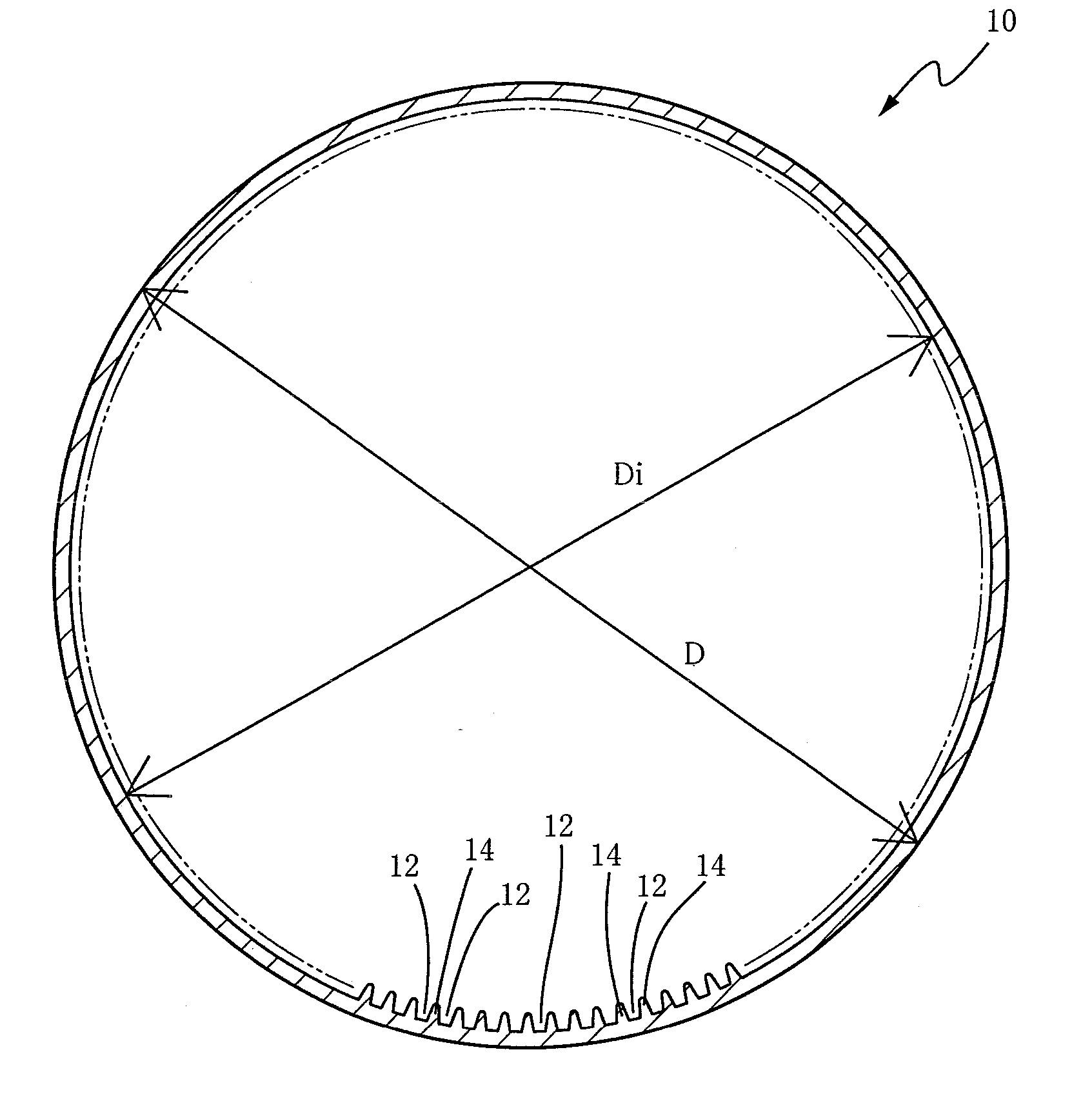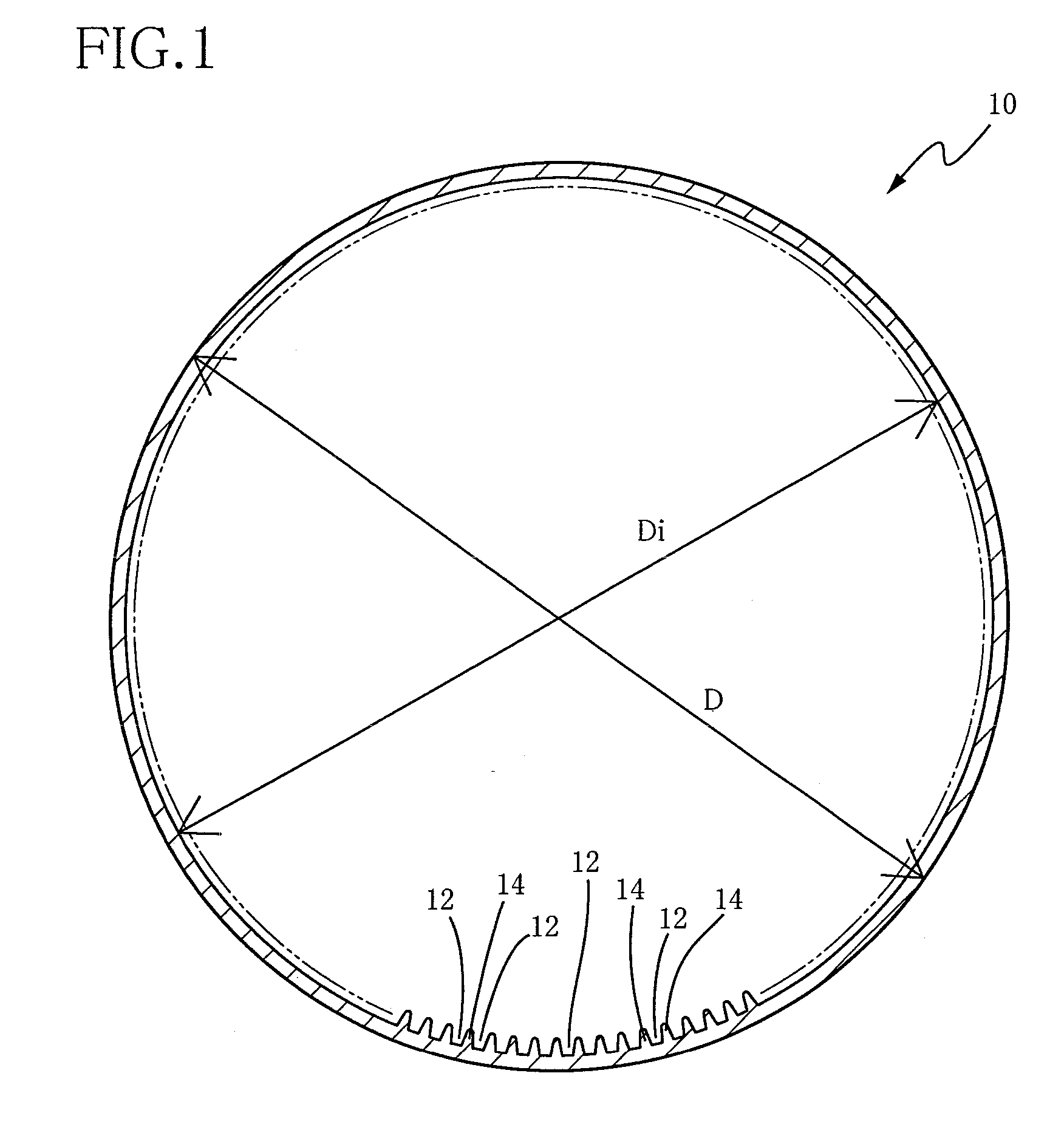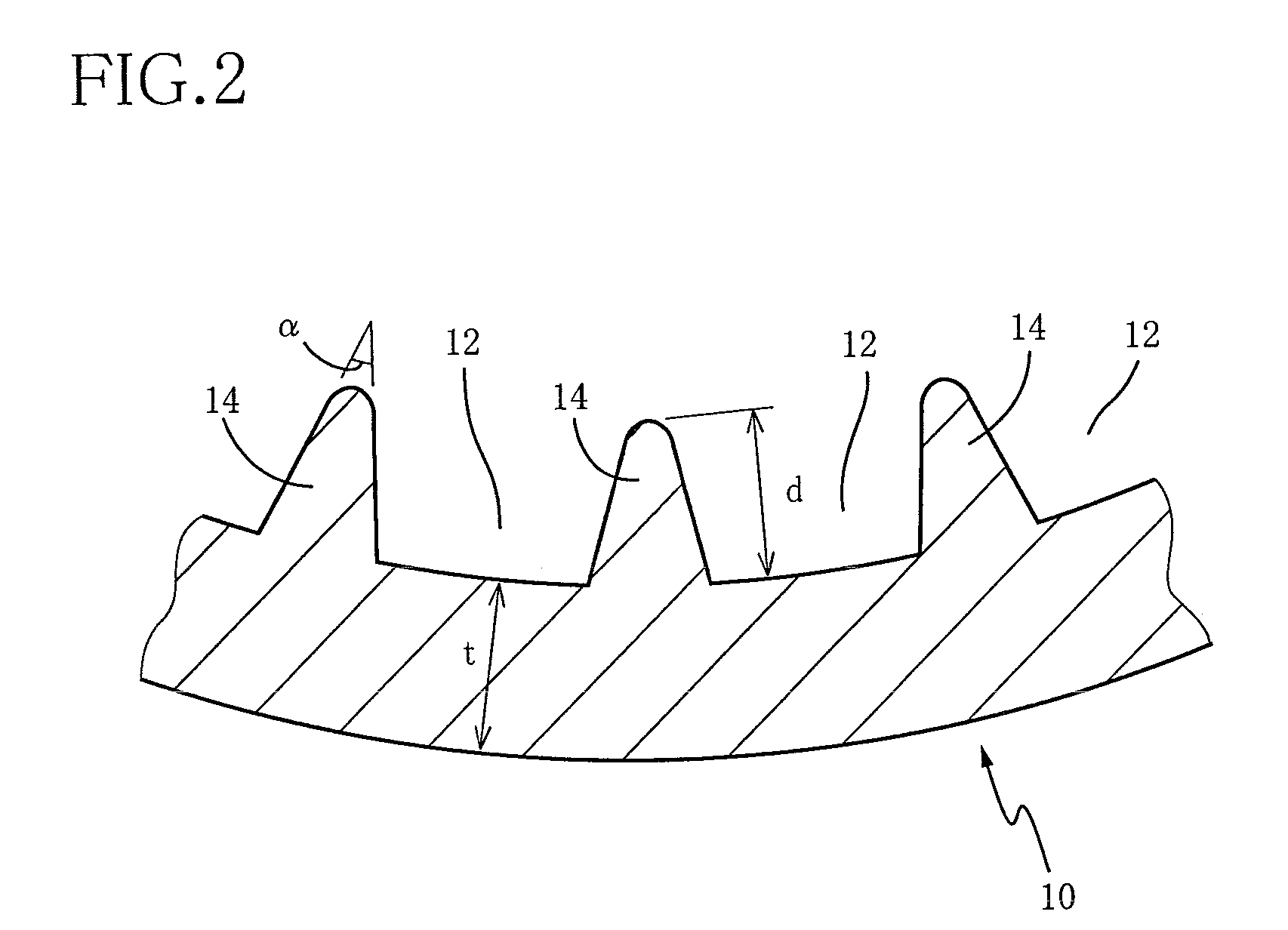Internally grooved heat transfer tube for high-pressure refrigerant
a heat transfer tube and heat exchanger technology, applied in indirect heat exchangers, refrigeration components, lighting and heating apparatus, etc., can solve the problems of poor heat transfer performance, deterioration of the workability of the tube, poor bonding of the tube, etc., to achieve the effect of improving heat transfer performance and strengthening pressure resistan
- Summary
- Abstract
- Description
- Claims
- Application Information
AI Technical Summary
Benefits of technology
Problems solved by technology
Method used
Image
Examples
embodiment
[0048] The characteristic of the present invention will be further clarified by indicating an embodiment of the invention. It is to be understood that the invention is not limited to the description of the embodiment.
[0049] Initially, as test heat transfer tubes, there are prepared internally grooved heat transfer tubes according to Examples 1-6 having mutually different specifications shown in the following TABLE 1. In each of those test heat transfer tubes, a multiplicity of internal grooves are formed as spiral grooves on the inner surface of the tube so as to extend with a prescribed inclination angle (lead angle) with respect of the tube axis. Further, the outside diameter, the groove bottom thickness, the groove depth, the cross sectional area of each groove, and the number of grooves are determined so as to satisfy the relational expressions according to the present invention. For comparison, there is prepared, as a Comparative example 1, a tube having ordinary specification...
PUM
| Property | Measurement | Unit |
|---|---|---|
| Thickness | aaaaa | aaaaa |
| Pressure | aaaaa | aaaaa |
| Diameter | aaaaa | aaaaa |
Abstract
Description
Claims
Application Information
 Login to View More
Login to View More - R&D
- Intellectual Property
- Life Sciences
- Materials
- Tech Scout
- Unparalleled Data Quality
- Higher Quality Content
- 60% Fewer Hallucinations
Browse by: Latest US Patents, China's latest patents, Technical Efficacy Thesaurus, Application Domain, Technology Topic, Popular Technical Reports.
© 2025 PatSnap. All rights reserved.Legal|Privacy policy|Modern Slavery Act Transparency Statement|Sitemap|About US| Contact US: help@patsnap.com



